Our view at Stack - Simplify growth with an all-in-one platform. Powerful marketing, sales, and support automation. Integrated CMS. Scalable software. Crafted for customer experience.
You want to learn about search engine optimization (SEO), but where do you start? We were all SEO beginners once, so take heart: There’s lots to learn, but I’ve got plenty of expert advice and a step-by-step guide to get you started.
![→ Download Now: SEO Starter Pack [Free Kit]](https://no-cache.hubspot.com/cta/default/53/1d7211ac-7b1b-4405-b940-54b8acedb26e.png)
We’ll start with some basic SEO vocabulary, review a step-by-step SEO tutorial to help you get your SEO strategy off the ground, and get tips from HubSpot SEO pro Victor Pan and SEOFOMO newsletter founder (and one of the world’s best-known SEO experts) Aleyda Solís.
Table of Contents
- SEO Basics
- How to Learn SEO
- SEO Step-by-Step Tutorial
SEO Basics
Understanding the foundational SEO vocabulary is important. Let’s dive into a few key terms:
- Search Engine Optimization (SEO): Tactics to optimize your website to provide the high-quality information searchers look for. Good SEO also helps you rank higher in search results for specific keywords so people can find your content.
- On-page SEO: Any website optimizations that improve search rankings, like the keywords used in your content or back-end elements like site structure.
- Off-page SEO: Any actions that improve your search engine rankings outside your website, like backlinks from other websites.
- Link building: Links to your website from other high-quality websites that build authority and credibility.
- SERPs: Search Engine Result Pages are the results page you see when you conduct a search on Google or another search engine.
- White-hat SEO: Optimization tactics that align with accepted and recognized best practices.
- Black-hat SEO: Optimization tactics that manipulate search engine algorithms to rank websites higher in SERPs. These tactics are often unethical.
- E-E-A-T: E-E-A-T stands for experience, expertise, authoritativeness, and trust. It’s part of Google’s search quality rater guidelines and one of the factors Google uses to determine a page’s relevance and authority.
- Keyword: Words or phrases users type into a search engine to find content related to their search. As an SEO, you want to include relevant keywords in your content that align with search intent so your site appears in related searches.
- Keyword research: The process of finding keywords people enter into search results related to your business to help you inform the words to use in your website pages and content.
- Organic/organic results: Any results in SERP that are unpaid and that appear because of a page’s relevance to the search query.
- Organic traffic: Organic traffic is traffic that comes from organic results.
- Rank/page ranking: Where your site falls in SERPs for a specific keyword.
- Ranking factor: A ranking factor is an element that impacts where your site may fall in search results, like your page authority.
- Search intent: Search intent is why a user conducts a search.
How to Learn SEO
Learning SEO is a big task, and because SEO best practices change over time, international SEO consultant Aleyda Solís “highly, highly recommends that you don’t go to a single source.” It’s why on her own site, LearningSEO.io, she’s compiled guides and information from many different resources.
Solís offers this pro tip: “See what works for you within your context,” because even if the information is accurate, “it might not be right for your circumstances.”
Here’s a few ways you can accomplish that:
1. Read and watch reliable resources.
There are a lot of educational resources out there to read and watch that will help you build your knowledge of SEO. Here are some of my recommendations.
- The HubSpot Marketing Blog (we cover a variety of topics for different skill levels)
- The HubSpot YouTube Channel
- Bing Webmaster Guidelines
- LearningSEO.io
- Search Engine Journal
- Search Engine Land
- SEMrush
Google still has a little more than 90% of the search market worldwide, so add its Search Central Blog and Search Quality Rater Guidelines to your list.
AI-powered search engines are a fast-growing segment of the search landscape, so if you want to see how AI perceives your website and brand, take HubSpot’s AI Search Grader tool for a spin (it’s pretty cool).
2. Take free courses.
If you benefit from structured and guided learning, an SEO course is another option to build on your SEO skills. A bonus is that many courses offer certificates upon completion. These are some high-quality options:
- HubSpot Academy SEO Training Certification (free): Best for beginners
- Google Analytics Academy (free): Beginner and advanced learning paths
- MOZ Academy (paid): Courses for multiple levels
- Semrush Academy (free): Courses for multiple levels
3. Stay on top of the trends.
Especially with the advent of AI-powered search, SEO changes and evolves on a sometimes daily basis. Algorithms get updated, new trends surface, and consumer behaviors change.
For example, in December 2022, Google added an E for experience to the old E-A-T guidelines. Experience ensures that content is helpful, relevant, and created by someone with experience in the subject at hand.
(And it’s a key differentiator between computers and humans, as AI-generated content scrambles to get a robotic foot in the door.)
One of the most important factors in becoming an SEO expert is staying on top of the trends so you can pivot when major industry shifts happen. We cover changes in the SEO landscape on the HubSpot Blog, and Google also maintains a running list of major updates that can impact your SEO success.
4. Study your competitors.
Learning from your competitors is a great way to understand the keys to their success.
Pan suggests looking at websites that are doing well and seeing what other pages they link to, so that when you’re “thinking about creating content, it’s not just a single piece of content you’re creating, but the whole journey that a user might go through.” Your content should cover a natural progression of topics.
You can conduct a competitor analysis to uncover new keywords, where competitors get backlinks (also called inbound links) from, and other new opportunities to capitalize on.
Featured Resource: Our free Competitive Analysis Templates help you conduct a thorough analysis of competitors in your niche, and this step-by-step guide walks you through how to use the template for an SEO competitive analysis.
5. Learn by doing.
Once you feel confident, you can take a hands-on approach and enact some SEO strategies.
Solís says to adopt “a mindset of being proactive — always testing, always curious, always skeptical, and always thinking from a strategic perspective.”
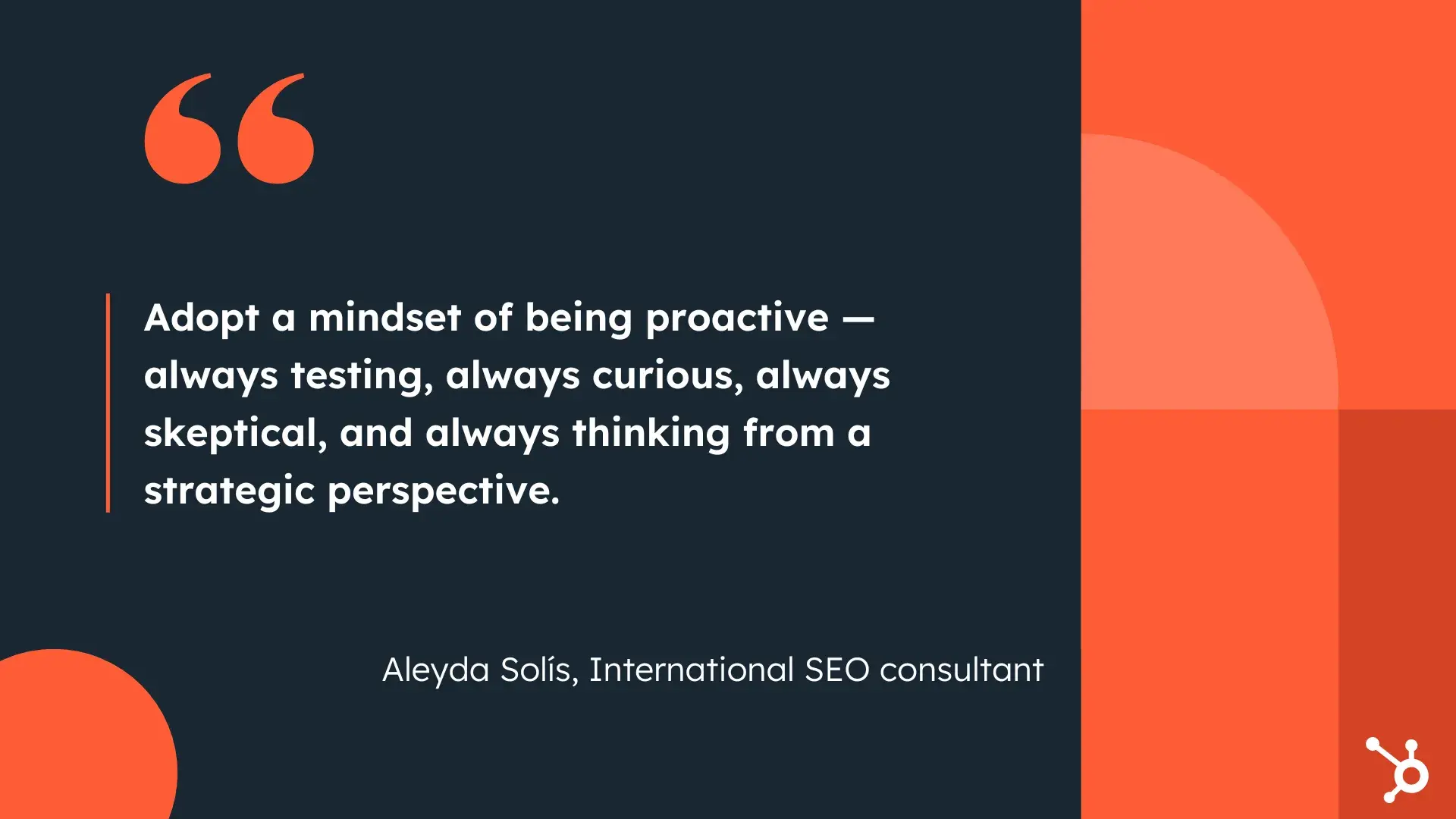
If you already have a website, you can practice by doing a competitor analysis and updating your current strategy based on your findings. If you don’t have a website, consider building one, implementing your new SEO knowledge, and monitoring metrics.
One of the best things about SEO is that a wide variety of tools are available to help you along every step of the way.
6. Use SEO tools.
Considering the breadth and depth of the internet, it would be a nightmare to do some of the essential SEO functions by hand — this is where SEO tools come in to save the day. They’ve saved me significant time and energy and quickly brought me the results I’m looking for.
Here’s a list of tools I recommend:
- HubSpot’s SEO Marketing Software offers SEO recommendations to improve your site, optimize page content, and measure ROI.
- AI Search Grader, another HubSpot tool, analyzes how visible your brand is to AI search engines.
- Our Website Grader scores your site based on factors like mobile friendliness and SEO optimization.
- Google’s Search Console can help you measure your site traffic and fix SEO performance issues.
- Google Analytics helps you view important metrics to understand your SEO efforts, like the measure of organic vs non-organic traffic.
- Ahrefs is a favorite of HubSpot bloggers. It helps you conduct keyword research and stats their important stats like search volume and CTR.
- Jasper is an AI writing assistant that can help write SEO-optimized blog posts with target keywords.
Once you’re more fluent in the vocabulary of SEO, it’s time to jump in and get hands-on. Since I’ve promised you the shortest SEO tutorial ever, I’ve broken it down into three very broad categories for beginners: content, technical, and sharing.
As you get more familiar and comfortable with SEO, you can build out strategies in each of these categories using the links I’ve provided below.
1. Content SEO: Write great content.
My number one tip for content SEO is simple, if not entirely straightforward: Write really good content.
There are caveats, of course. What Google deems “really good” has changed over the years, sometimes dramatically and sometimes subtly, so this advice still requires at least a passing interest in industry trends.
And no matter how great it is, if your content covers a topic that not many people are asking questions about, you’re not going to see a flood of traffic.
So I’ve got some tools and roadmaps to help you structure your SEO — but even as you incorporate these tips, writing great content should be your north star.
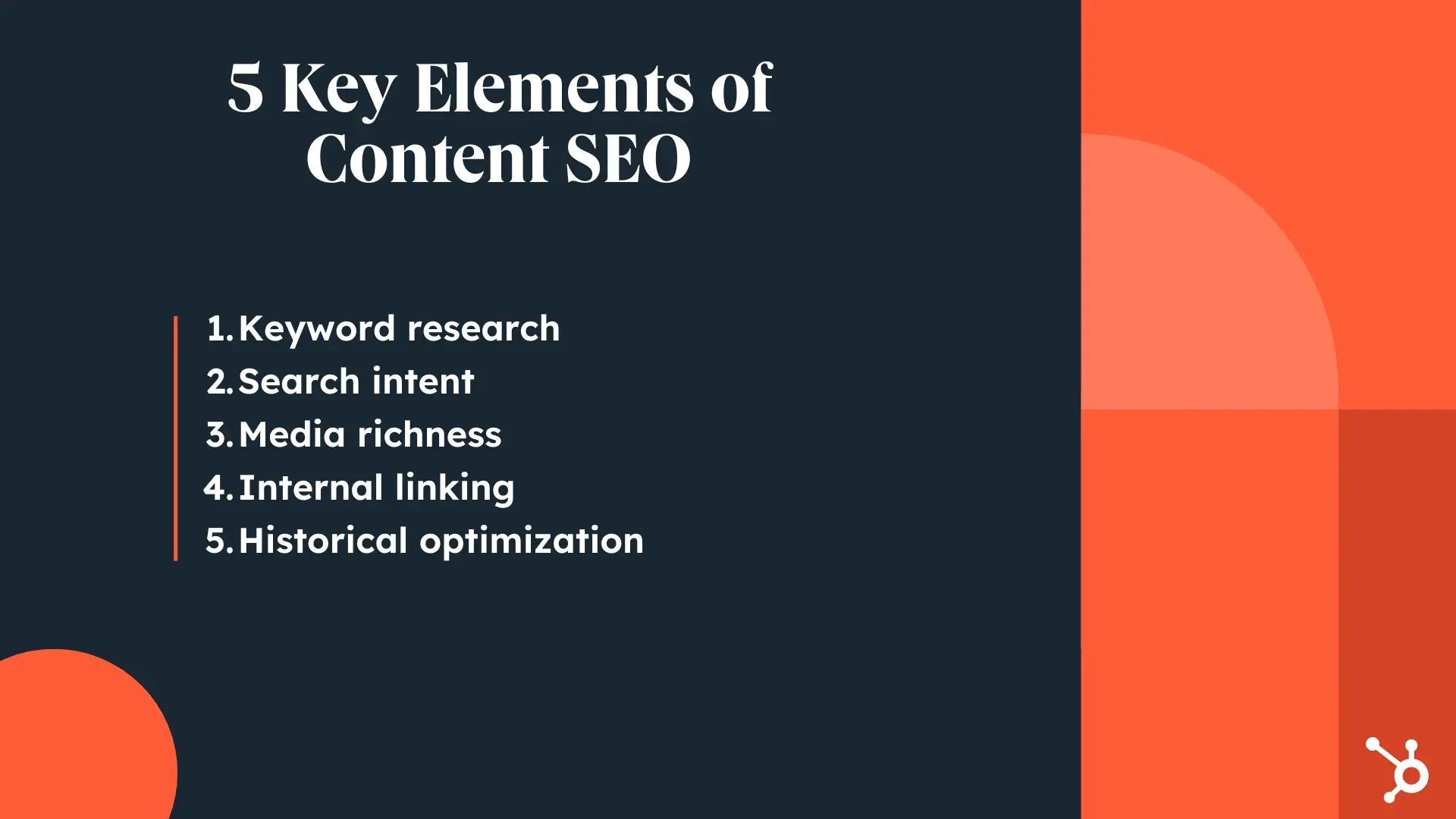
Keyword Research
Keyword research is a cornerstone of good content SEO. It’s a great starting point for SEO beginners, so we’ll spend the most time here.
A dedicated tool like Ahrefs or SemRush can be useful for SEOs whether you’re a newbie or a pro, but you can also begin by simply listing words and phrases relevant to your business.
For instance, if you sell roasted coffee, you might opt for “roasted coffee,” “Colombian coffee,” and “local coffee roaster.”
List these keywords in a spreadsheet or document for you to keep track of.
Then, pick one word or phrase to use on one page of your site. In other words, you don’t want to target different keywords on one page. You want to target one keyword, as well as any keywords it’s semantically related to, so that you’re capturing user intent.
Continuing with the example from above, I might create a page for “local coffee roaster.” That would be my main keyword, but I can also target semantically related terms such as “local coffee,” “coffee roaster near me,” “coffee roaster [city name],” and “locally roasted coffee.”
This begins with keyword research, but Pan says not to stress out about it too much: Start by making a list of what the natural things people would search for. Put some of those keywords into Google and see what else people search for.
I asked Google, “is Jurassic Park real,” and here are some related common search terms, heaven help us:
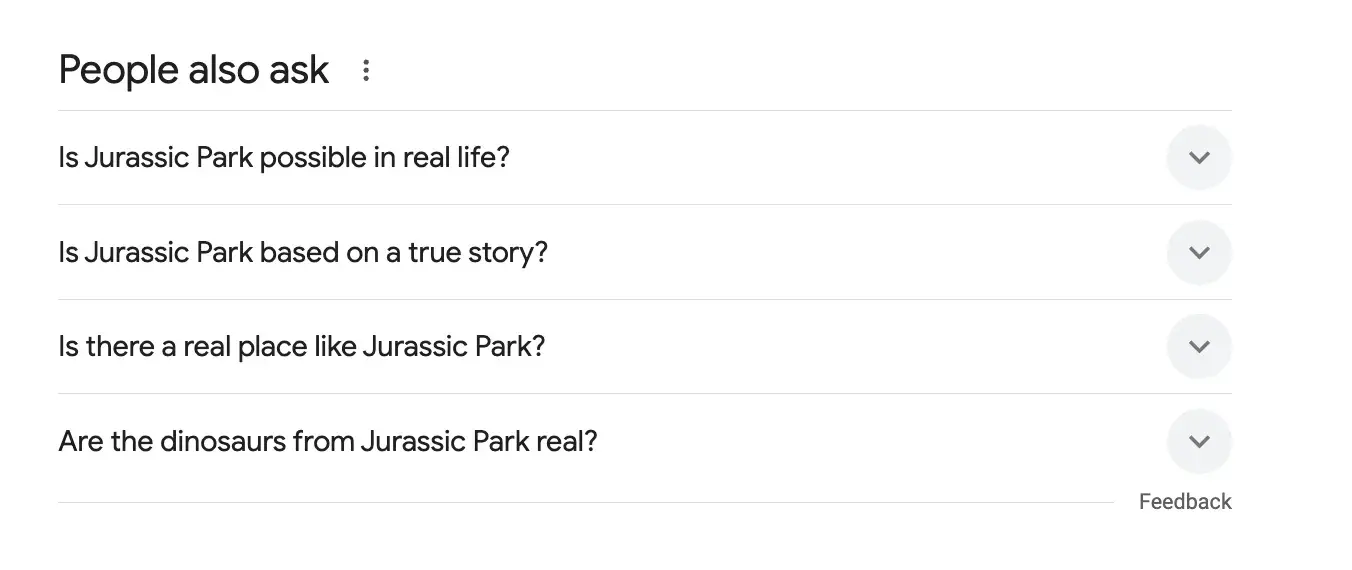
Image Source
You’ll do better as a beginner to try to rank higher on keywords that have a lower search volume — trying to outrank well established sites on keywords with high difficulty is not going to earn you a lot of visitors. But if you’re an expert on a somewhat more niche topic, it’s your time to shine.
Once you’ve got some keywords in hand, here’s a few ways to use them to your advantage:
- Use the keywords in the page title
- Use them in your URL
- Use them in your meta description
- Use them in your H1
- Use them in your page content — naturally. If you’re trying to force it, you may have chosen the wrong keywords for your content.
Consider this:
“We have seen some indie publications close because of overreliance on Google traffic. More than ever, this is a good reminder for SEOs to not necessarily rely only on Google. Try to diversify through all the channels and platforms that people are now using to search.” —Aleyda Solís
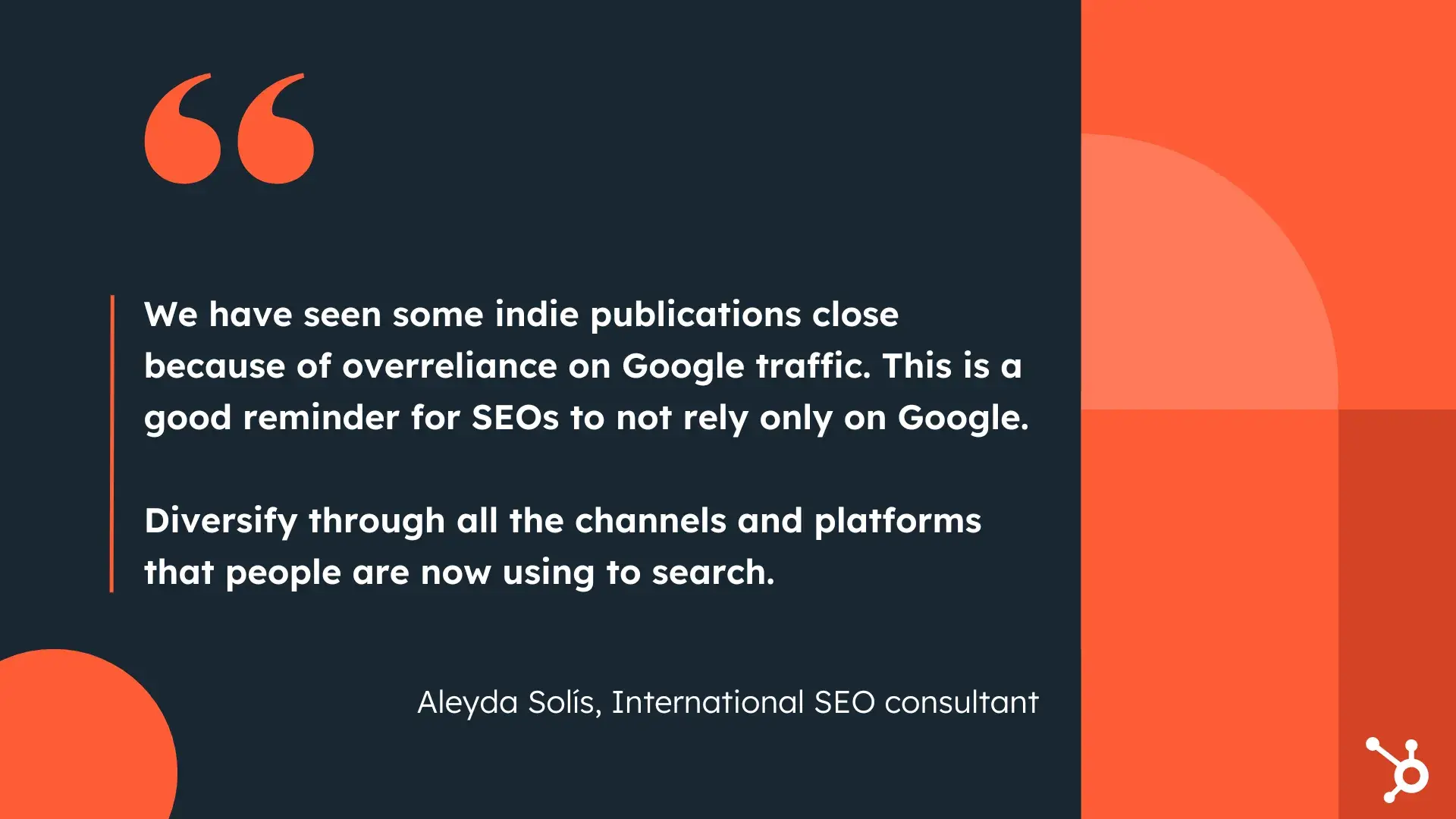
Search Intent
Why a user types a specific query into Google or another search engine is as important as the term itself.
For instance, if I search for “is Jurassic Park real” because I want a job training velociraptors, I’m expecting very different results from somebody using the same query to find out whether the movies were filmed at real-life nature parks that I could go visit.
Generally speaking, users want to learn something, to investigate a brand or product, to complete an action like buying a certain product, or to find a specific website.
Media Richness
Rich media includes audio, graphics, video, polls, or other interactive features. Think like a user: Do you want to read a 4,000-word block of text, or do you want animations or graphics to help break that up?
By structuring this data in the backend, you can optimize your content to make it more appealing in the SERPs.
Internal Linking
As you build out your content library, it’s important to link to your own content, which can help boost traffic and, over time, build your page authority.
The HubSpot blogs have thousands (and thousands) of posts that predate me, so to find relevant blog content to link to, I type “site:blog.hubspot.com” into Google, followed by the term or phrase I’m looking for.
From there, I can decide what to link to based on recency and relevancy. (And thank goodness for this, because my brain is too full of old song lyrics to remember anything useful.)
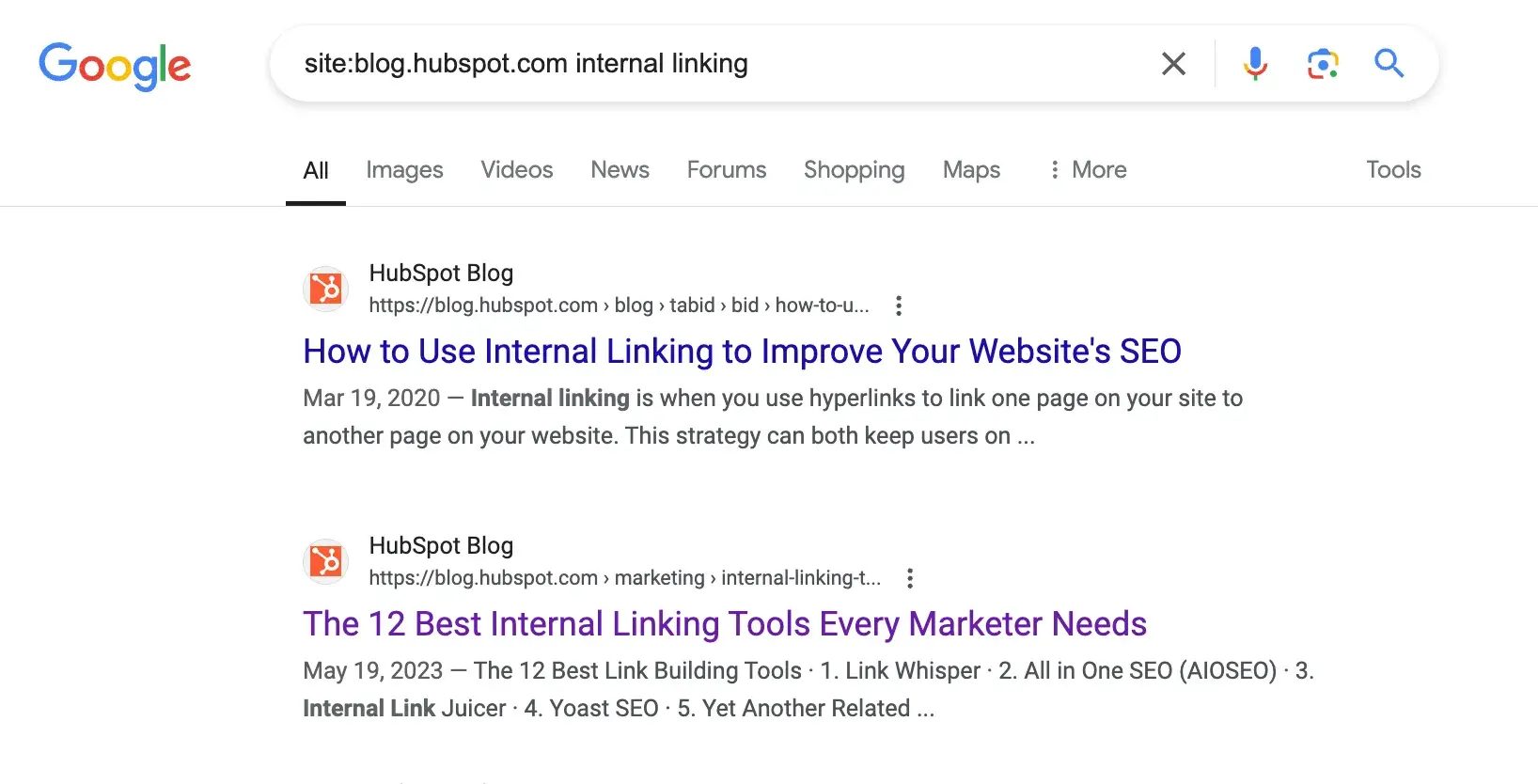
Image Source
Historical Optimization
If you’re doing SEO for a property that has a large content library, chances are good that some of that content is outdated. But that doesn’t mean it’s useless — far from it.
At a previous job, I reorganized and rewrote event recaps that were no longer serving their original purpose. Because each event centered around a specific topic or theme, it was easy enough to update the titles, headings, and images. I also updated statistics, the content itself, and the publish date.
It didn’t happen overnight, but those pages crept back up in Google’s rankings once they became relevant to our audience again.
Another way to optimize older content is to add more examples and make sure any existing examples are still correct. Double-check links and anything else that may have changed, like step-by-step instructions.
2. Technical SEO: Improve the technical elements of your website.
Even the best content on the internet won’t get any readers if Google can’t find it.
I once worked on a website relaunch that began with an audit of our URL structure. We had to create a logical way of structuring our URLs before we could think about things like redesigning graphics.
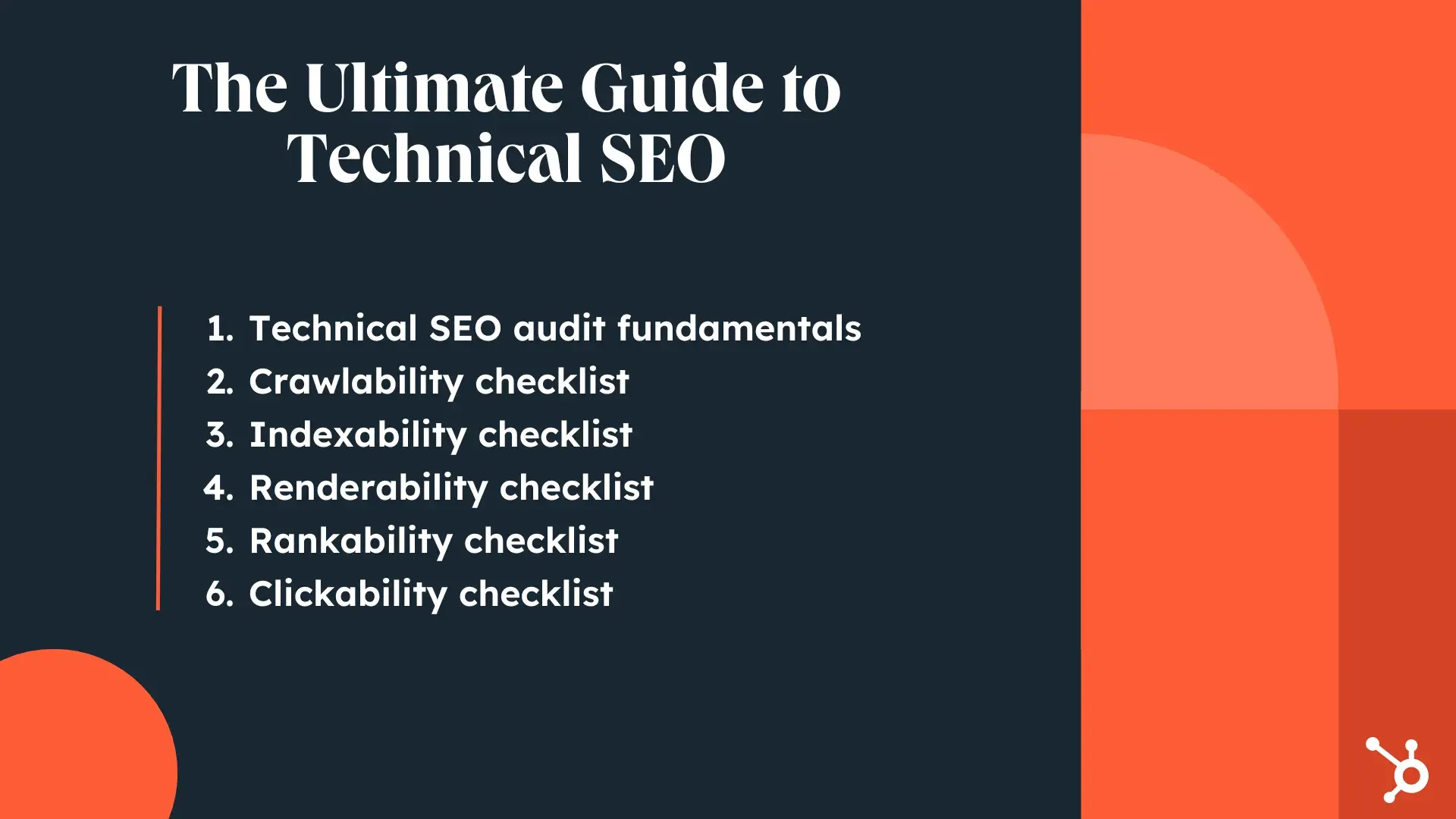
Technical SEO can seem complicated if you don’t have a lot of technical experience. Don’t try to do everything at once — the goal here is to set a strong technical foundation so that Google and other search engines can easily find and crawl your website so that it shows up in search results.
Pro tip: Choose a good CMS — like, ahem, HubSpot — that will take care of the more technical aspects so you don’t have to.
Go deeper into technical SEO with our technical SEO guide, which begins with the fundamentals you’ll need to run an audit. It also takes you through crawlability, indexability, renderability, rankability, and clickability.
3. Sharing and Backlinking: Make sure that users can find your website.
Because your content is great, people want to share it. Congratulations! Now let’s talk about how to build those backlinks.
Pan says to ask yourself, “Why do people want to share what you created?”
He identifies three simple answers to that question. “One, you’re super local, so it’s very relevant. You might even be the only person talking about it.”
“Two, you could have data or a perspective that only your site can share, because of access that you have,” like original research or other proprietary data.
And lastly, “your content triggers an emotional response.”
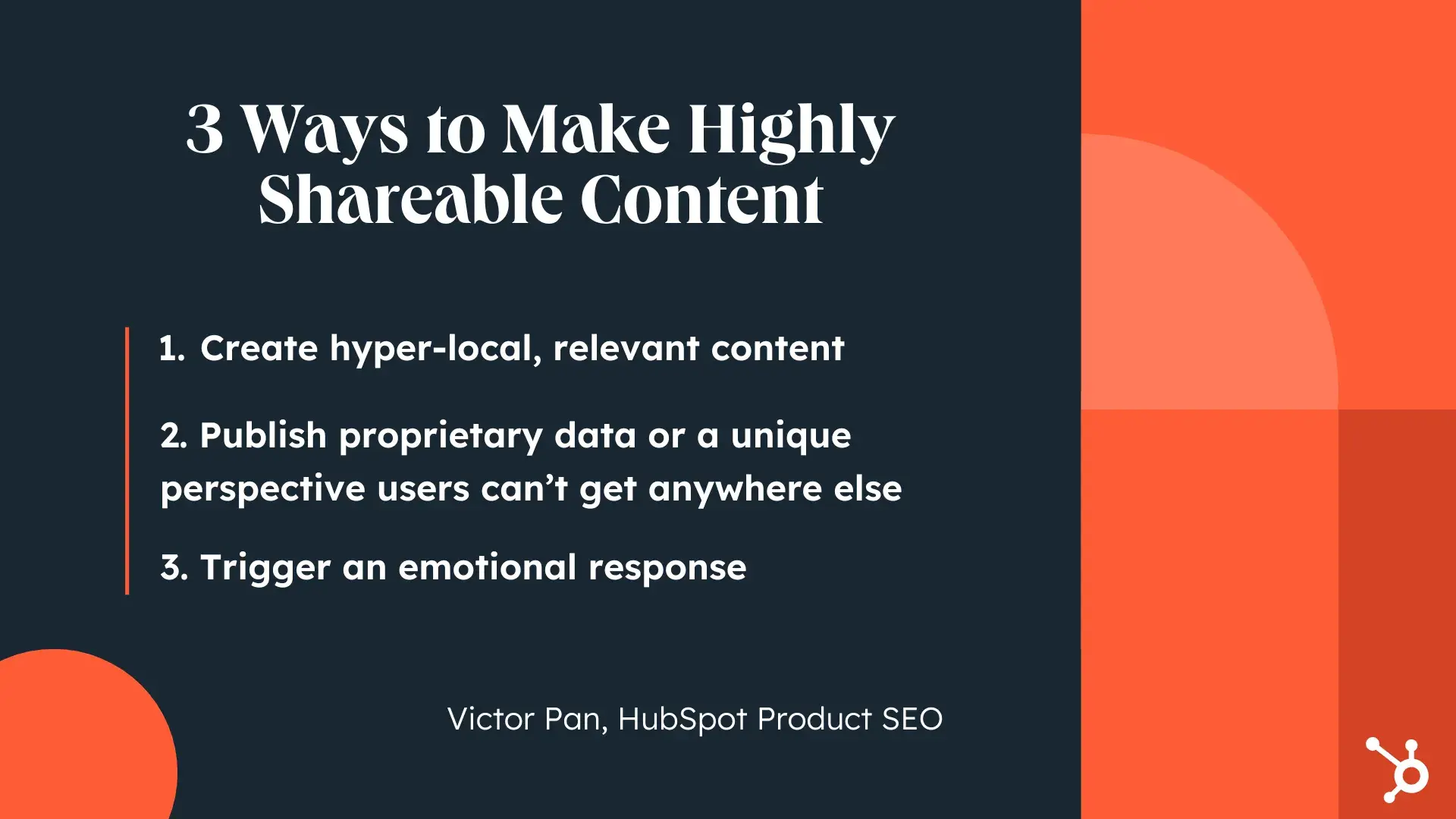
One simple thing I do for HubSpot articles is provide quote cards to the subject matter experts I’ve talked to. It’s an easy way to encourage link sharing beyond your own network, and it doesn’t take much time.
It’s also important to understand the different types of backlinks — for instance, you might be able to write a guest blog on another high-quality website and link back to your own.
We’ve got a complete guide on backlinking when you’re ready to give it a shot.
This SEO Step-by-Step Tutorial is Just the Beginning
Your learning doesn’t have to stop here. With the SEO 101 vocabulary I mentioned above and the step-by-step tutorial, you can easily start creating an effective search engine optimization strategy.
Our starter pack, linked below, will help you ramp up your SEO plans and boost the likelihood of your website ranking on the first page of SERPs.
Editor’s note: This post was originally published in March 2013 and has been updated for comprehensiveness.
![]()
If Hubspot is of interest and you'd like more information, please do make contact or take a look in more detail here.
Credit: Original article published here.
